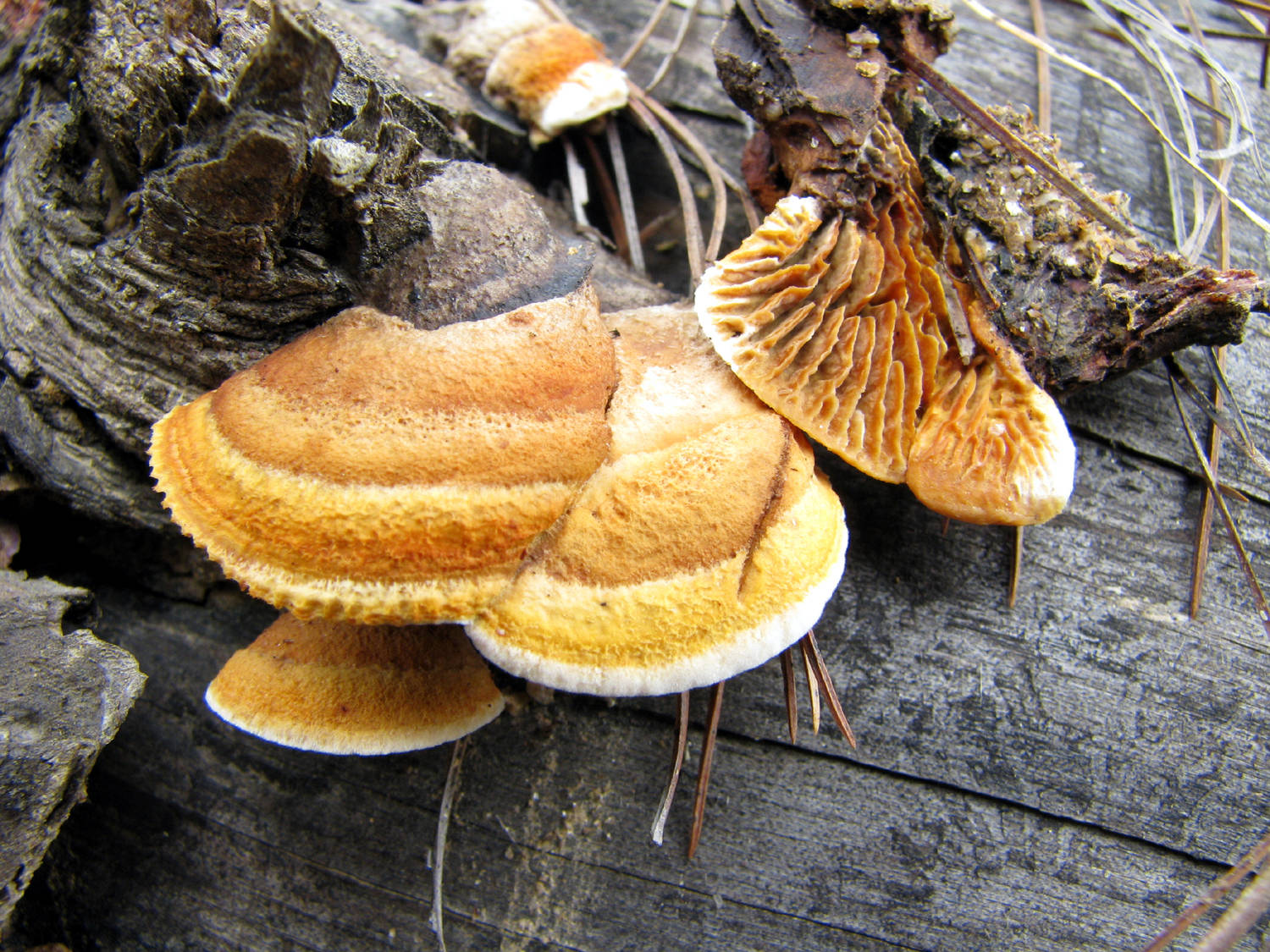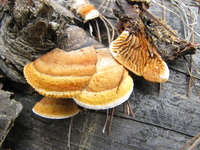
Local name: No local name known
Edibility: Inedible
Habitat: Solitary or gregarious or sometimes caespitose too and growing on dead woods.
Description: Upper surface: 2-5 cm wide, bright yellowish to reddish-brown with a white to orange growing margin, and hairy. Hymenophore: Golden-brown, mostly gills-like elongated pores and hard. Flesh: Woody or leathery hard. Spore Print: Brownish yellow.
Comments: Gloeophyllum sepiariumis fairly easily recognized as when it is fresh and very young its cap is more or less orange, but as it matures brown colours replace the orange from the centre outwards. The underside of this polypore features gills like which is a bit odd, since polypore have pores rather than gills. Other distinguishing features include the brown flesh and the black reaction to KOH.
Local name: No local name known
Edibility: Inedible
Habitat: Solitary or gregarious or sometimes caespitose too and growing on dead woods.
Description: Upper surface: 2-5 cm wide, bright yellowish to reddish-brown with a white to orange growing margin, and hairy. Hymenophore: Golden-brown, mostly gills-like elongated pores and hard. Flesh: Woody or leathery hard. Spore Print: Brownish yellow.
Comments: Gloeophyllum sepiariumis fairly easily recognized as when it is fresh and very young its cap is more or less orange, but as it matures brown colours replace the orange from the centre outwards. The underside of this polypore features gills like which is a bit odd, since polypore have pores rather than gills. Other distinguishing features include the brown flesh and the black reaction to KOH.



